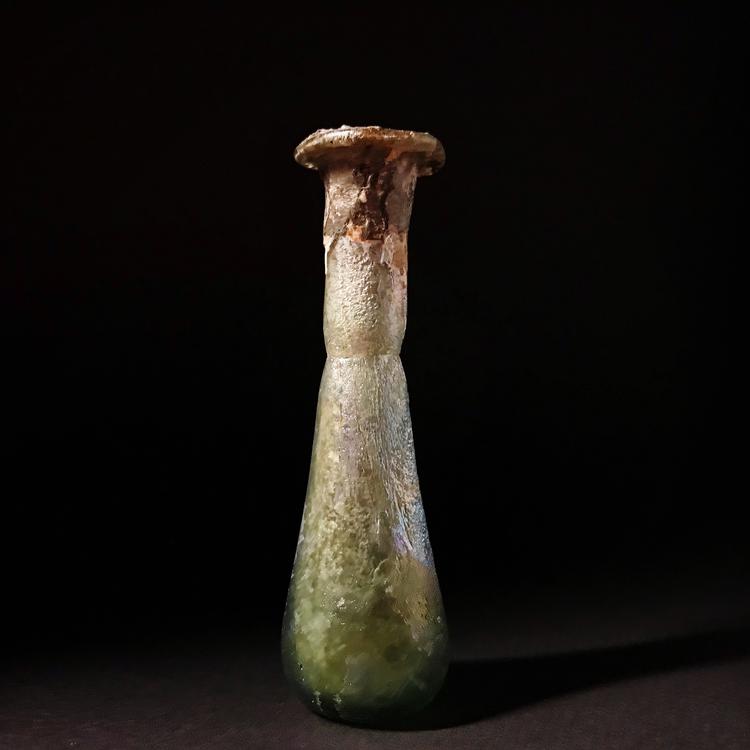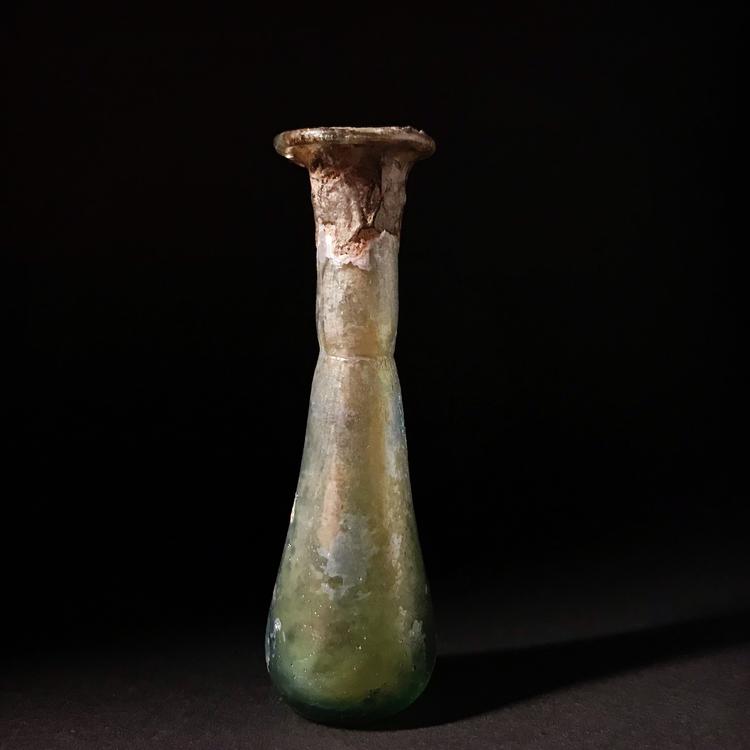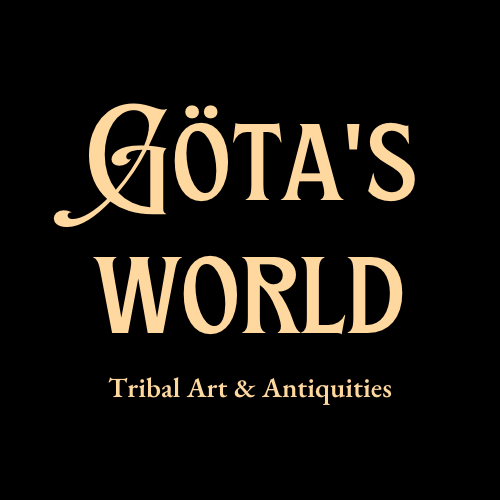Roman Glass Unguentaria
Roman Glass Unguentaria
Couldn't load pickup availability
The Roman Empire, c. 100-200AD.
Exceptional Roman glass bottle, known as an unguentaria (also referred to as unguentarium, balsamarium, or lacrimarium), likely used for holding oils, perfumes, or other liquids and powders. This small-sized bottle features a piriform (pear-shaped) body and a tubular long neck with a slight constriction at the junction to the flat base, accompanied by an everted rim. The rim is delicately folded inward, presenting a form widely adopted throughout the Roman Empire from the first to early fourth centuries.
Unguentaria were frequently found among Roman grave goods, though their precise purpose remains uncertain. These bottles may have been used for rituals or as offerings, potentially containing oils, wine, or incense meant to honor the deceased or gods.
Roman glassmakers were pioneers in glass technology over 2,000 years ago, having developed soda-lime glass. This glass was created from a mixture of silicon, sodium, and calcium oxides, and often incorporated metallic oxides for color. Copper produced hues ranging from turquoise to light blue, green, and red, while cobalt created deep blue glass. Manganese and antimony contributed vibrant yellows, whites, and purples, and iron produced colors such as light blue, green, brown, and black, often imitating the shades of precious gemstones like lapis lazuli and amethyst.
This unguentarium showcases the skill and ingenuity of Roman glassmaking, offering a glimpse into the artistry and craftsmanship of the ancient world.
Good condition. Fractures and small holes in the rim, otherwise intact. Gorgeous patina and age-induced wear occur. The surface of the exterior and interior is calcified and encrusted with minerals over the years. Bottle has a stunning, heavy iridescent colour that varying from olive green to seafoam green. Size approx. 6,9cm x 2,1cm x 2,0cm.
Provenance: From the collection of painter and tv producer Ole Braunstein (1917–1999). Donee of the Høyen Prize in 1984.


-
Shipping
The shipment will be prepared in the course of 3-5 days and dispatched via Posti Group Oyj or purchased item(s) can be picked up from our shop during the store's opening hours (Tarkk’ampujankatu 4, 00140, Helsinki, Finland). Within the Finland, all items are shipped via Posti Group Oyj unless otherwise requested. We pack the items carefully and mainly in recycled materials because we want to save nature. You will receive the tracking number for your items by e-mail.
-
Returns
Returns and exchange will be accepted within fourteen days (14) of receipt at the purchaser’s cost to include freight and packaging. Items must be returned in the same condition as when they were shipped, and will not be accepted if damaged or altered in any way. Please inform us via email (info@gotanmaailma.fi) or by calling +358408408352 before sending. We do not accept returns more than 14 days after delivery.


